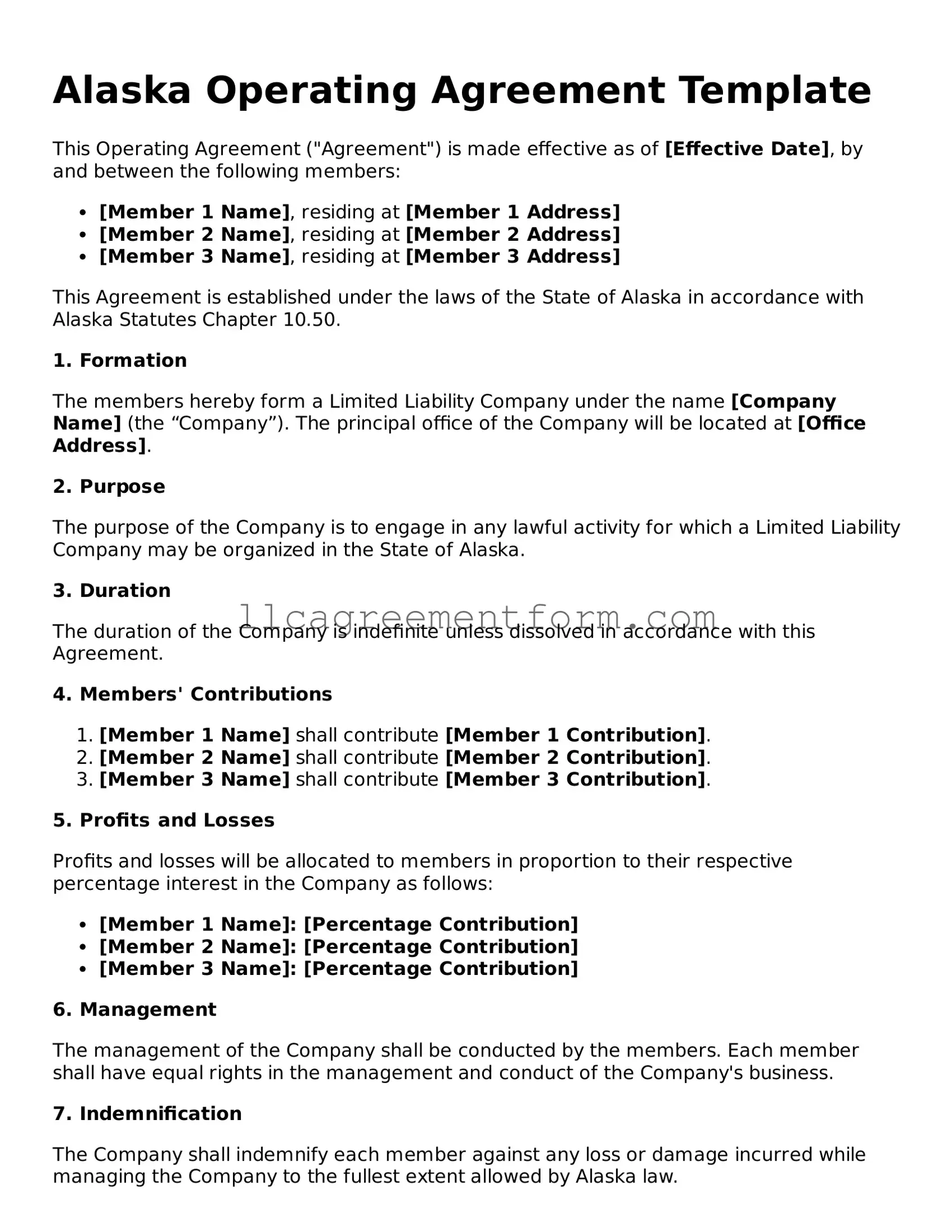Free Operating Agreement Document for Alaska
The Alaska Operating Agreement form is a crucial document that outlines the management structure and operational guidelines for a limited liability company (LLC) in Alaska. This agreement serves as a roadmap for members, detailing their rights and responsibilities while ensuring compliance with state regulations. To get started on your LLC journey, fill out the form by clicking the button below.
Get Operating Agreement Now
